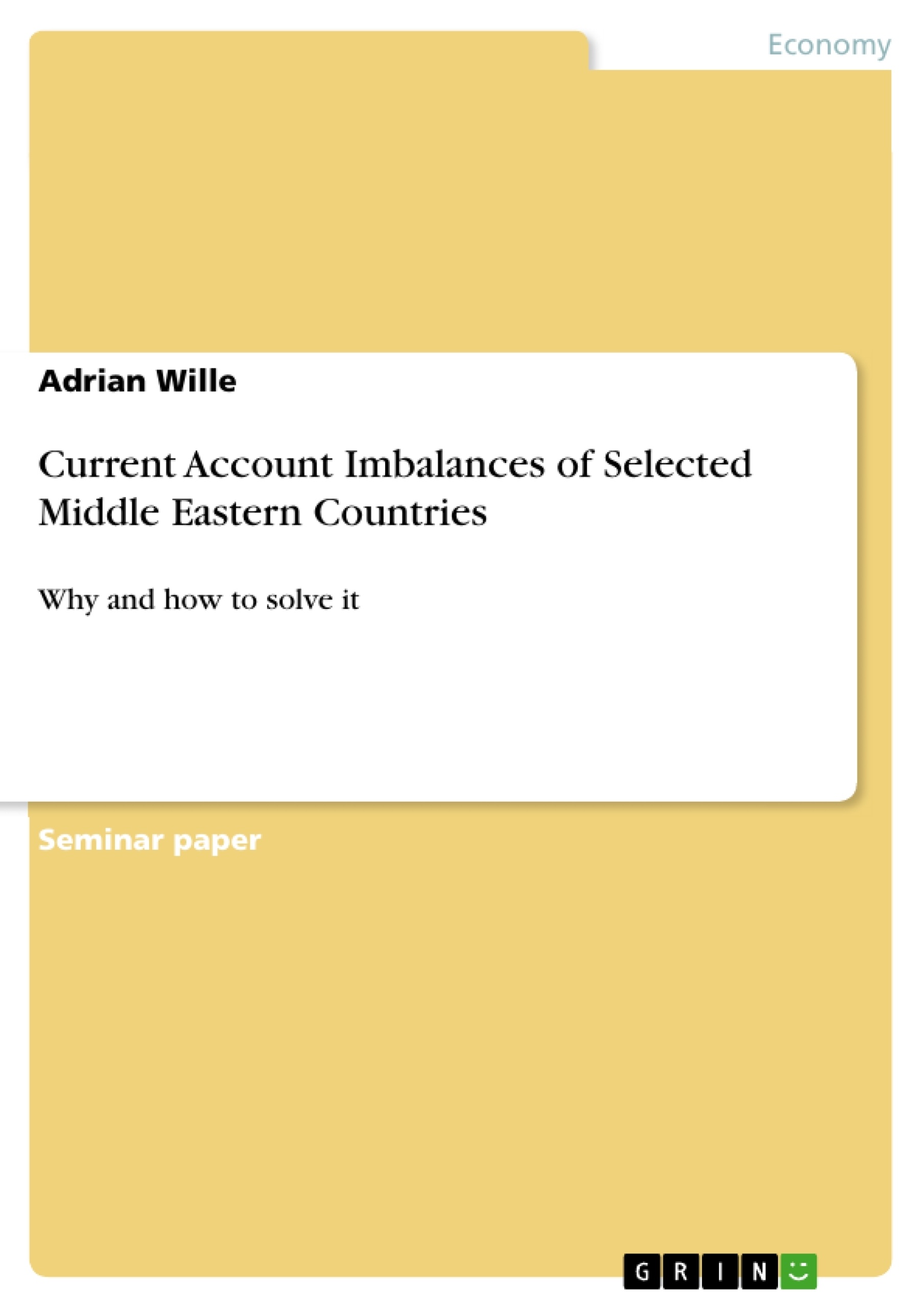Discussions on global economic imbalances and adjustment have become highly valued and popular nowadays. The worldwide financial crisis, European crisis and China’s rise to an economic world ower have particularly brought these issues to light. China is thought to boost its exports through an artificial low exchange rate, Germany is accused of profiting from the common European currency and money policy through high competiveness and the USA is blamed for financing its excessive consumption through unsustainable foreign debt. Notable cases are also found in the Middle East. Above all, attention must be paid to the antagonism toward oil exporting and non-oil exporting countries. Their different economic structures are often the primary cause of current account imbalances. Hence, this paper focuses on the examination of two Middle Eastern countries: Lebanon and Saudi-
Arabia. Lebanon is a small oil-importing country with a diverse population that experienced a period of intense European influence and which has been regularly confronted with regional
conflicts. Saudi-Arabia is a major regional power and oil-exporting country, whose politics emerge from a strictly conservative Islamic ideology. Primary attention is paid to the current accounts of the two countries. The purpose of this paper is to examine the causes of the current account imbalances and to propose strategies to adjust these imbalances. Chapter 1 deals with Lebanon’s current account deficit and traces it back, on the one hand, to a negative trade balance, which derived from its historically weak industry sector, caused by low productivity. On the other hand, Lebanon experiences a high twin deficit that
further supports this imbalance. Chapter 2 analyzes Saudi-Arabia’s current account surplus, which is caused by enormous oil-exports and further revenues from temporary high oil prices. Subtracting the oil sector, negative structural effects of this rentier-system become apparent; they cause a theoretical current account deficit. Examples are the outflow of workers’ remittances and a blown-up public sector. Each of these two chapters concludes with a
proposed solution containing strategies to overcome these imbalances and to create sustainable economic development. Chapter 3 sums up the results.
Inhaltsverzeichnis (Table of Contents)
- Introduction
- Lebanon's Trade Balance Deficit
- Preliminary Overview of Lebanon's Current Account
- The Underdeveloped Industry Sector
- The Twin Deficit
- Proposed Solution: Saving, Targeted Investment and Political Support
- Saudi-Arabia's Dependences
- Preliminary Overview of Saudi-Arabia's Current Account
- The Oil-Rentierism
- The Curse of Rentierism
- Proposed Solution: Privatization, Liberalism and Diversification
- Summing up Conclusion
Zielsetzung und Themenschwerpunkte (Objectives and Key Themes)
This paper examines the current account imbalances of two Middle Eastern countries, Lebanon and Saudi Arabia, with the aim of analyzing the causes of these imbalances and proposing strategies for adjustment. The main objectives are to understand the economic structures of both countries, identify the key factors driving their current account performance, and ultimately, to offer sustainable solutions for achieving economic stability. Key themes explored include:- The impact of oil-dependent economies
- The relationship between trade balance, investment, and economic growth
- The role of government policy in addressing current account imbalances
- The importance of structural reforms for sustainable economic development
- The challenges posed by regional conflicts and political instability
Zusammenfassung der Kapitel (Chapter Summaries)
Lebanon's Trade Balance Deficit
Chapter 1 focuses on the analysis of Lebanon's persistent current account deficit. The chapter explores the role of the negative trade balance, driven by a historically weak industrial sector characterized by low productivity. The chapter further investigates the impact of the twin deficit, which exacerbates the current account imbalance. The chapter concludes with proposed solutions to overcome these challenges, including strategies to promote saving, targeted investment, and political support for economic growth.Saudi-Arabia's Dependences
Chapter 2 investigates the causes of Saudi Arabia's current account surplus, highlighting the dominance of oil exports and the impact of fluctuating oil prices. The chapter examines the negative structural effects of the rentier system, including the outflow of workers' remittances and a bloated public sector, despite the overall surplus. The chapter presents proposed solutions, emphasizing the importance of privatization, liberalization, and diversification to create a sustainable economic structure.Schlüsselwörter (Keywords)
The key focus of this paper lies on the examination of current account imbalances in the context of Middle Eastern economies. The analysis centers on two specific cases: Lebanon, an oil-importing country with a diverse population, and Saudi Arabia, a major oil-exporting country. Key concepts explored include trade balance, current account deficit, current account surplus, twin deficit, oil-rentierism, economic diversification, industrial development, and government policy.- Arbeit zitieren
- Adrian Wille (Autor:in), 2011, Current Account Imbalances of Selected Middle Eastern Countries, München, GRIN Verlag, https://www.grin.com/document/184043



